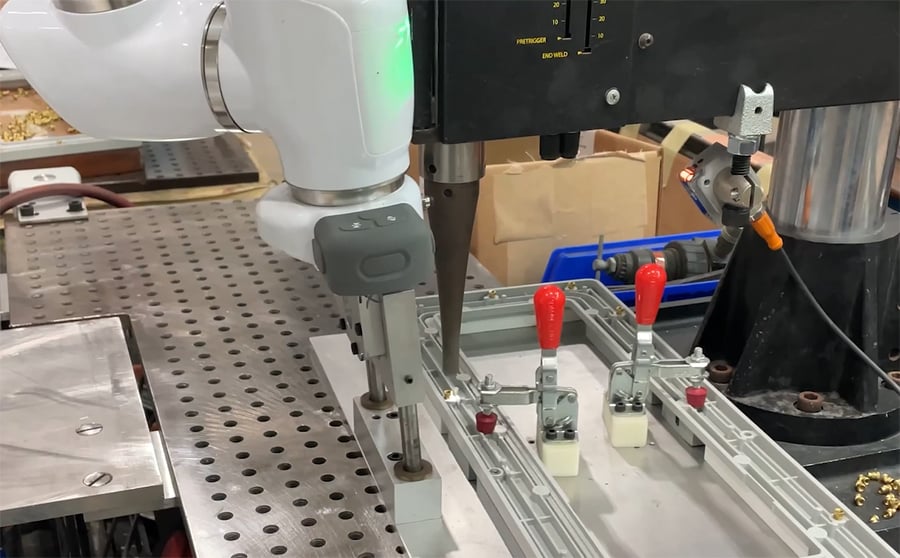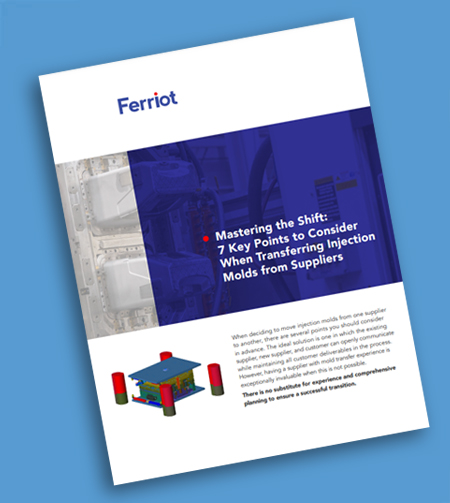Problem: Ferriot needed to find a way to produce a high-mix, low-volume portfolio of parts for its customers without requiring two or more operators on every job.
Solution: The combination of cobots and vision systems was quickly adapted to handle a wide range of custom injection molded parts.
Dave Tillett, editor at Plastics Machinery Magazine, in a recent interview with Jeff Hodnick, an automation engineer at Ferriot, learned how Ferriot turned the problem into an opportunity and ultimately developed their solution.
By using cobots in coordination with vision systems, Ferriot can handle tasks that formerly required human operations to perform mundane tasks repeatedly. After implementing its new automation processes a few years ago, Ferriot can better utilize its workforce more efficiently to perform essential tasks, resulting in better quality control and efficient expediting of deliveries.
Ferriot is putting cobots into service in some very unique ways. “The easiest task for a cobot is pick-and-place stuff,” Hodnick said. “From there, it kind of evolves up into where we actually put Dremel tools to use a cobot almost like a CNC. Worked phenomenal, too.”
Ultrasonic welding is another job the automation department tackled. “We use parts underneath an ultrasonic welder with one cobot. We had to come up with some of our own proprietary stuff to pull it off, but we were able to.”
Read the full article from Plastics Machinery Magazine to learn more.
Learn more:
Automating Injection Molding Processes Improves Efficiency: Cobots & Vision Systems
Automating Injection Molding Processes Improves Efficiency: 3D Printing End-of-Arm Tooling
Ultrasonic Welding: What Designers Need to Know
Importance of TQM to Injection Molding Projects



